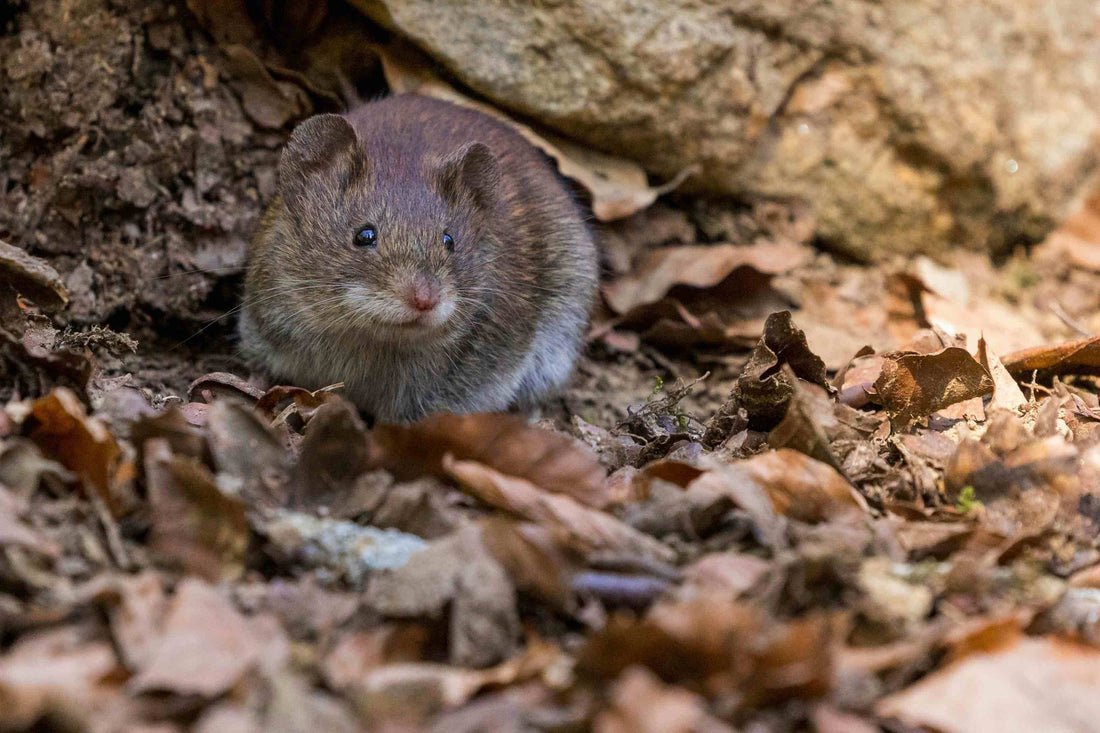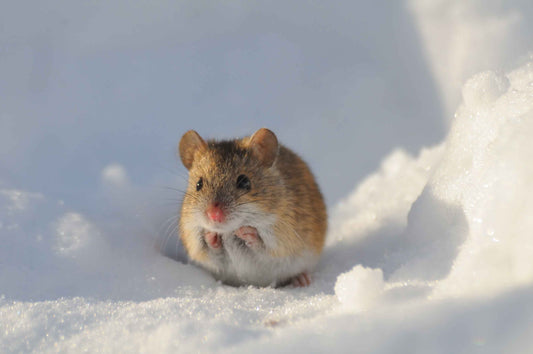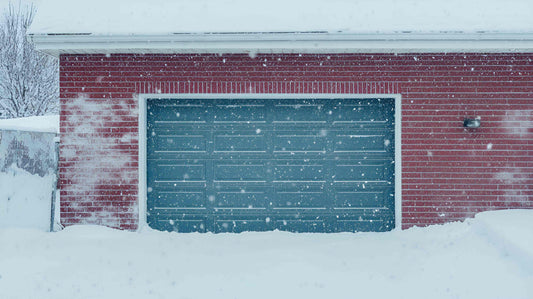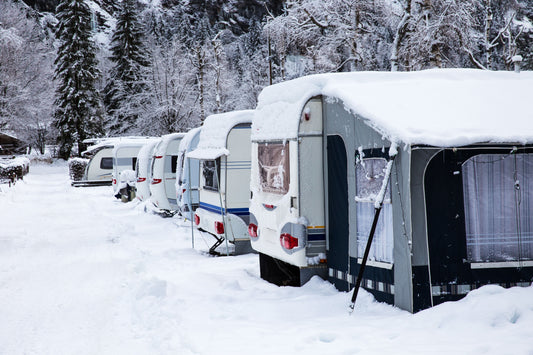
Is Rodent Damage Covered by Auto Insurance?
Share
Mice and other small rodents would love nothing more than to snuggle into your vehicle for the winter months. It’s warm, it’s safe, and it’s full of great nesting materials. Unfortunately, their presence can lead to significant and costly damage — from chewed wiring to contaminated air filters.
So, the big question is: Is rodent damage covered by auto insurance?
Types of Mouse Damage to Cars
For something so small, a mouse can cause big-time damage to your vehicle. They’re notorious for getting into hard-to-reach areas and wreaking havoc. Common types of damage include:
- Electrical system damage: Rodents often chew through wiring, hoses, fluid lines, and other critical components.
- Interior damage: Upholstery and insulation make great nesting materials. Shredded fabric, droppings, and urine are telltale signs.
- Contaminated air filters: Mice can nest in HVAC systems, blocking airflow and causing foul odors or rattling sounds.
Why Do Mice Chew on Car Wires?
There’s a persistent myth that soy-based wiring in modern vehicles attracts mice. While soy components may play a minor role, the truth is simpler: mice will chew on anything.
Their teeth grow continuously, and gnawing on hard materials like wires helps keep them trimmed. Once inside your car, they’ll chew on whatever’s available — not out of malice, but instinct.
That’s why it’s important to keep rodents from ever getting into your vehicle in the first place.
What Is Comprehensive Coverage — and Does It Cover Rodent Damage?
Comprehensive insurance protects your vehicle from non-collision damage — including theft, vandalism, fire, weather events, and animal damage. This is typically the part of your policy that applies when rodents, squirrels, or other animals cause damage to your vehicle.
Does Everyone Have It?
Not necessarily.
While comprehensive coverage is required by most car lenders and leasing companies, the Insurance Information Institute estimates that 20% of US drivers do not carry comprehensive insurance.
If you only carry liability or collision coverage, your insurer won’t pay for rodent damage — those only cover accidents and damage you cause to others.
Paying the Deductible vs. Paying “Out of Pocket”
If your policy does cover rodent damage, you’ll still pay your deductible (usually $250–$1,000) before the insurer covers the remainder. For minor repairs, it may not make financial sense to file a claim if the damage is close to or below your deductible amount, particularly if you believe it may result in a rate increase.
When Rodent Damage May Not Be Covered by Auto Insurance
Even with comprehensive coverage, claims can be denied under certain conditions:
- Negligence clauses: If you ignored signs of rodents or left food in your vehicle, your insurer may deny the claim.
- Maintenance exclusions: Some providers classify rodent damage as a maintenance issue rather than an unforeseen event.
- Policy limitations: Not all carriers automatically include animal damage — some require a specific add-on (see below for RV & Trailer Insurance)
- Warranty confusion: Vehicle warranties, even extended ones, rarely cover rodent damage. Warranties protect against mechanical defects, not external causes.
If you’re unsure, contact your insurer directly or ask for written clarification before filing a claim.
Does RV and Travel Trailer Insurance Cover Rodent Damage?
This is where things differ.
Unlike standard car insurance, RV and trailer policies often exclude rodent damage from their basic plans. Many insurance companies consider it a maintenance issue rather than an insurable event.
Some only provide coverage through a specific add-on or rider, like Progressive’s Pest Damage Protection plan — which still only applies to vehicles that are less than 6 years old.
| Insurance Company | Rodent Damage Covered? | Details |
|---|---|---|
| Progressive | ✅ (Add-On) | Offers Pest Damage Protection℠ as an optional add-on for motorhomes and non-stationary trailers. Covers rodent damage for RVs under 6 years old with a $250 deductible. |
| GEICO | ❌ | Standard RV policies typically exclude rodent damage, especially while stationary or in storage. |
| State Farm | ❌ | Rodent infestations are not typically covered under standard RV policies. |
| Allstate | ❌ | Standard RV coverage does not include rodent damage unless explicitly added. |
| Roamly | ❓ Varies | Coverage depends on the underwriter (e.g., Progressive, Allstate). Check your individual policy. |
Tip: If you store your RV or trailer for the winter, keep comprehensive coverage active or ask about pest-damage add-ons before parking it for the season.
How to File a Claim for Rodent Damage
If you’ve discovered rodent damage, it’s important to act quickly and compile all available information to share with your provider. Here’s how to navigate the claims process efficiently:
- Document everything. Take clear photos of the damage — chewed wires, nests, droppings, etc.
- Get a repair estimate. Ask your mechanic to note the cause of damage (“rodent chewing”) on the invoice.
- Contact your insurer. Confirm whether your comprehensive policy includes animal or rodent damage.
- Submit documentation. Provide photos, repair estimates, and receipts.
- Pay your deductible. Once your claim is approved, your insurer will cover the rest.
- Ask about rental coverage. If repairs take several days, see if your policy includes a rental car allowance.
- Track communication. Keep records of all correspondence for reference.
Will Filing a Rodent Damage Claim Raise My Rates?
In some cases, yes — but not always.
Comprehensive claims are typically treated as “non-fault” incidents, meaning the impact on your premium is usually smaller than for collision or liability claims.
Most insurers may raise rates by 2–5% after a claim, but it depends on your claim history, location, and insurer policies. If the cost of repairs is only slightly higher than your deductible, you may be better off paying out of pocket
How Much Does It Cost to Fix Rodent Damage?
Repair costs vary depending on the location and severity of the damage:
| Type of Repair | Typical Cost Range |
|---|---|
| Wiring repairs | $500–$2,500 |
| HVAC or air-filter cleaning | $300–$1,000 |
| Interior cleanup / odor removal | $200–$600 |
| Severe or multi-system electrical damage | $3,000–$5,000+ |
| Ranges are estimates; actual costs vary by make, model, and extent of damage. Diagnostics and labor can add significantly. | |
Labor and diagnostics can add significantly to the cost, as tracking down chewed wiring is time-consuming. Multiple infestations or long-term storage can drive prices even higher.
For a better estimate, check out our Rodent Damage Cost Calculator.
Should You Keep Insurance While Your Vehicle Is in Storage?
Absolutely.
Even when your vehicle isn’t on the road, it’s still vulnerable to rodents, vandalism, and weather events. If you cancel or suspend coverage, you’ll lose protection for non-collision events — including pest damage.
Ask your insurer whether you can switch to “comprehensive-only” storage coverage, which lowers your monthly premium while keeping protection in place.

Tips to Prevent Mouse Damage
If you live in an area prone to rodents or plan to store your vehicle for an extended period, prevention is your best defense.
- Keep your car and garage clean — remove food scraps and clutter.
- Inspect regularly for droppings, shredded materials, or chew marks.
- Move your vehicle occasionally to discourage nesting.
- Use deterrents like lights, peppermint oil, or traps.
- Install a Box-Kat mouse barrier: Our patented solution physically prevents rodents from crawling under or over your vehicle while parked — an ideal safeguard during storage.
Frequently Asked Questions
Will my car warranty cover rodent damage?
No. Warranties cover manufacturing defects, not external causes like animals or pests.
Does homeowners insurance cover rodent damage to vehicles?
No. Vehicle damage must be handled under your auto insurance policy.
Should I file a claim for minor damage?
If the repair cost is close to your deductible, paying out of pocket may be the better option.
Can I add rodent protection later?
Yes, some insurers allow you to add pest-damage coverage or riders mid-term or during renewal.
Be Proactive — Protect Your Vehicle Before It Happens
The best way to deal with a mouse problem? Don’t let it start.
The Box-Kat mouse barrier is a patented system that prevents rodents from jumping over or burrowing under your vehicle. Whether you’re protecting a car, trailer, RV, or van, Box-Kat gives you peace of mind while your vehicle is in storage — or sitting unused in your driveway.
Don’t wait for damage. Invest in prevention now and keep your vehicle ready for the road — not the repair shop.



